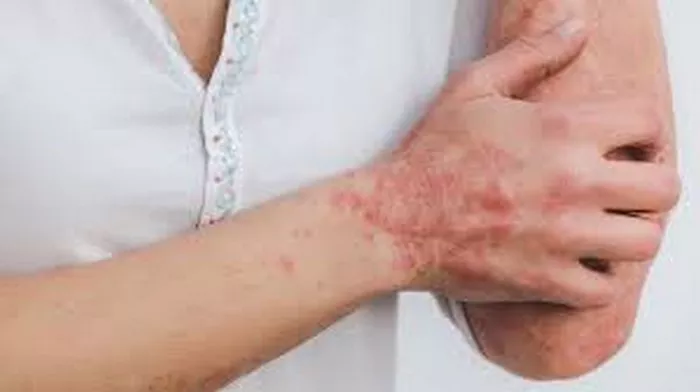Rosacea, a chronic skin condition predominantly affecting the face, is characterized by various symptoms such as redness, swelling, acne-like sores, and visible blood vessels. It primarily impacts areas like the nose, cheeks, and forehead, and can fluctuate in severity over time. While the exact cause of rosacea remains elusive, researchers have identified several contributing factors including genetic predisposition, environmental triggers, microbial influences, immune system abnormalities, and vascular issues.
Exposure to ultraviolet (UV) light is recognized as a significant trigger for rosacea. UV rays activate inflammatory mediators in the skin, leading to redness and irritation. Additionally, UV exposure causes vasodilation, widening blood vessels and exacerbating symptoms like facial redness and visible veins. To manage rosacea effectively, individuals are advised to minimize sun exposure, wear sunscreen daily, and use protective clothing.
Immune dysregulation is another key factor in rosacea development. When the immune system reacts excessively, it can trigger inflammation and vasodilation, contributing to persistent redness and swelling. Furthermore, certain proteins like cathelicidin, normally protective against infections, may instead provoke inflammatory responses in the skin of rosacea sufferers.
Research also points to the role of specific bacteria and mites in rosacea pathogenesis. Elevated levels of bacteria such as Bacillus oleronius and Demodex mites have been observed in affected individuals, though their exact contribution to rosacea onset is still under investigation.
Vascular abnormalities and neurovascular dysregulation further complicate the condition, involving structural changes in blood vessels and disruptions in nerve signaling that lead to chronic facial flushing and redness.
Rosacea manifests in various subtypes, each with distinct symptoms and potential causes. These include erythematotelangiectatic rosacea, papulopustular rosacea, ocular rosacea, granulomatous rosacea, and phymatous rosacea, each linked to different underlying mechanisms ranging from vascular issues to immune dysfunction.
Genetic predisposition plays a significant role in rosacea, with familial clustering observed in many cases. Individuals with fair skin, particularly those of Celtic or Scandinavian descent, and those aged between 30 and 50 years are at higher risk.
Several lifestyle factors such as smoking, alcohol consumption, stress, and dietary choices can exacerbate rosacea symptoms or increase the risk of developing the condition. For instance, smoking and alcohol consumption are known to worsen vascular symptoms and inflammatory responses in the skin.
Understanding these multifaceted factors and triggers is crucial for managing rosacea effectively. Tailored treatment plans, often involving a combination of medical therapies and lifestyle adjustments, can significantly improve quality of life for individuals living with this chronic condition.
In conclusion, while the precise causes of rosacea remain complex and multifactorial, ongoing research continues to elucidate the interplay of genetic, environmental, microbial, immune, and vascular factors underlying its development. For those affected, early diagnosis and personalized management strategies are essential in mitigating symptoms and improving long-term outcomes.
Related Topics:
- Advancements in Plaque Psoriasis Treatment: Exploring the Role of Nonsteroidal Topical Therapies
- Hyphens Pharma Secures Rights to Maruho’s Shingles Treatment for ASEAN Market
- InflaRx Highlights the Potential of INF904 at R&D Event



























